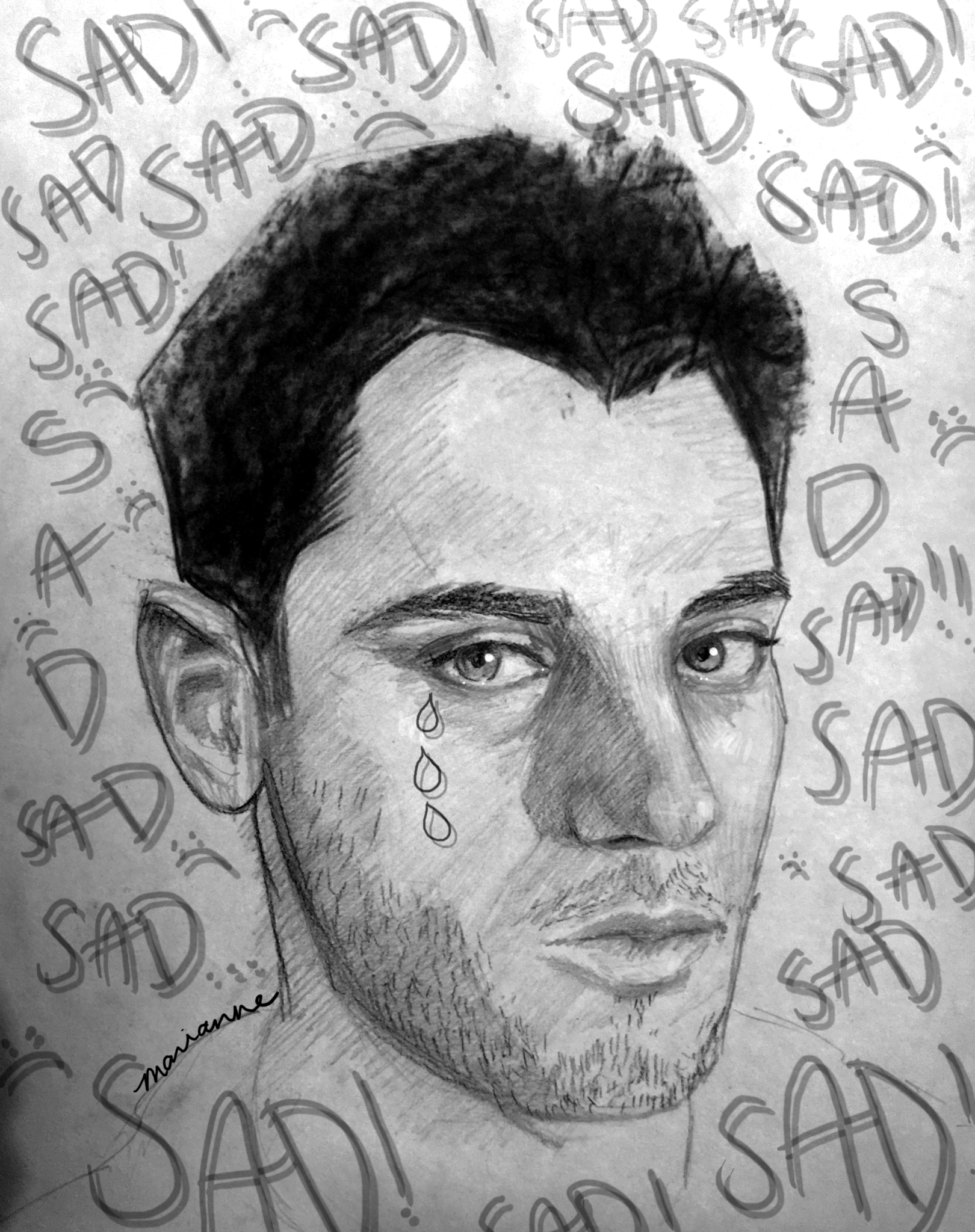
“You’re such a sadboi!”
After we laughed for a bit, she left with my smile. And, once again, alone with my readings and perplexed, I was wondering if our giggling had magically canceled the sadness I had been feeling that morning.
A way out of the confusion I encountered when I asked my friends to give me a definition for “sadboyism” was to take the term at face value: Sadbois are boys who are — or appear to be — sad. At a point in time as positive as ever in terms of the popular sentiment towards the breaking of gender binaries, you would think a term descriptive of an end from the masculine tradition of suppressing emotions would be popular. You would be wrong.
A truly puzzling phenomenon, which could have its roots in justifiable assumptions about “masculinity” itself, sadboyism hits too close to home for more than one would expect. Ultimately, what becomes important is one question: Are “sadbois” honestly expressing sadness or simply performing to reap the benefits of an environment that values emotional expression?
From quite superficial to very deep showcases of sadness, sadbois make it a point to own up to their emotional state — often in ways that appear … unnatural. The combination of a long-established culture that understands masculinity as stoic and the socially aware “exhibition” of a dark mental situation can make one skeptical of the authenticity of their emotions. Often, this skepticism turns out to be very well grounded.
Particularly in the romantic sphere, sadbois have done a truly remarkable job at giving themselves a bad name. The appealing nature of a (hu)man in contact with their emotional world makes sadbois appealing as romantic partners. However, possibly due to their self-perception as praiseworthy traitors to masculinity, sadbois can be self-centered and feel entitled to emotional labor on behalf of their partners. That role can be very hard when it becomes clear that sadbois privilege their sadness compared to other emotions. Or even worse, that they are not even genuine about it.
The truth might be that sadboyism is less of an emotional and more of a cultural phenomenon. The sexy repackaging of the previously “useless” male sadness destigmatizes it, but only in a specific and narrow way. The resulting flawless “sadness” truly is less of an emotion and more of an aesthetic. To be admired, made fun of, improved, criticized; but never be fully experienced.
My problem is not with the aesthetic itself. To be quite frank, I also do find it quite appealing. The confusion, however, starts when the emotion of sadness is equated with that aesthetic. In sadboyism, sadness finds its formulation as a cultural choice, which is often romanticized. Perhaps that is a result of its simplistic and strictly singular conception of the emotion it proposes. And even though that does injustice to the complexity of the human psyche, it admittedly is easier to deal with. Effectively, sadboyism trivializes instances of actual male sadness while reinforcing unemotional conceptions of masculinity.
The categorical conflating of sadness with sadboyism makes the experience of sadness appear to be a cultural decision. That becomes a widely recognized way of substituting actual emotional expression and perpetuates problematic notions of masculinity by concealing it. Additionally, the appeal of the aesthetic can lead to a self-destructive romanticization of the feeling of sadness itself.
Besides, being a sadboi restricts the emotional pluralism of the human experience, conditioning it to a lens of sadness for the sake of aesthetic conformity. In reality, it is quite unthinkable that one emotion can be so dominant in a person to singularly define their identity. Even more, the sadboi aesthetic standardizes the expression of male sadness, restricting subjectivity in its experience. As a result, the lines between who is a sadboi as an aesthetic preference and who conformed to that ideal can be blurred.
Masculinity is not a set of norms internalized by men only. Sadboyism as a cultural phenomenon grew out of the need for male sadness to be useful and less awkward for everyone. Rebranding and standardizing the expression of male sadness in sadboyism, however, actually inhibits that expression itself. Of course masculinity cannot beat sadness; but it can suppress it by substituting it with a sexy aesthetic, which it also manages to weaponize. Society follows; meme pages make fun of it, pop culture embraces it, people criticize it. And more often that we’d like to admit, we ourselves find it hot.
Ultimately, though, everybody seems to have forgotten about real sadness. Unfortunately, we have become so used to dealing with a trivial substitute of it that we cannot conceive of its existence anymore. Sad men who are trying to find a way to express their emotions are dismissed as sadbois way too quickly; perhaps because it would make it less awkward for everyone if they were sad only aesthetically. Unfortunately that is not always the case. Depression and mental illness in general are real (for men too!) and should be taken more seriously.
It’s not evil to suppress one’s emotions; people have to do it everyday to avoid uncomfortable situations. However, when that is a result of normative masculinity, it becomes problematic. Sadboyism should not be viewed as a necessary breakaway from that tradition, but rather as a cultural substitute which can or cannot be accompanied by genuine emotional expression. The weaponization of this strict aesthetic of male sadness, particularly in the romantic sphere, has generally turned it from an object of appeal to an object of ridicule and criticism.
Varying in degrees of severity, we all are wounded by structures. Justifiably, sadboyism is currently looked down on as an excuse for further suppression of emotions and other people on behalf of men. Though this may be the case, we should be more cautious with how we use a term, which appears to be harmless, but actually reinforces stereotypical conceptions of male sadness and dismisses real experiences with the emotion.
Viktor Dimas | viktor.dimas@yale.edu







